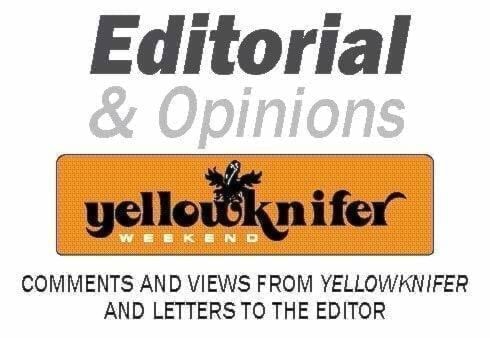Premiers are always lightning rods.
Over the past 18 months, so too have been chief public health officers across the country as they attempt to help their respective jurisdictions navigate the COVID-19 pandemic.
This is the job that Dr. Kami Kandola signed up for in the Northwest Territories, but she surely didn’t envision the existing monumental task and all of the accompanying backlash.
Kandola announced on Sept. 14 that individuals who test positive for COVID-19 must stay indoors for the duration of their self-isolation period with no visitors, unless their symptoms get so bad that a trip to the hospital is necessary.
This surely elicited groans in some corners and calls or whispers of “authoritarianism.”
The closure of schools to minimize spread of the virus also angered some parents. At the same time – to everyone’s chagrin – it affected health services on Sept. 14, as many of our health staff also have children to consider.
Kandola also reminded residents to “wear a mask” – an instruction that continues to make some residents bristle.
There are close to 200 active cases of COVID-19 in the territory and 22 people have been hospitalized since the virus emerged. The outbreak has the health system under enormous pressure, trying to keep up with demands for assessments and contact tracing.
For those who would simply prefer to disregard Kandola’s educated directives, they need look no further than south of the border in Alberta, a province that has become an unmitigated disaster. Premier Jason Kenney and chief medical officer of health Dr. Deena Hinshaw left many mouths agape across the country over the past several months as they forged ahead with an “open for summer” approach that saw COVID-19 public health restrictions rescinded in July.
The result? Kenney stood at a podium on Sept. 15 and made a public apology for being so cavalier, so foolish, as the province imposed a state of public health emergency with virus cases soaring during a fourth wave – 1,609 new infections and 24 COVID deaths on Sept. 15 alone.
Alberta could be within 10 days of overloading intensive care beds and staff, Kenney warned. The government has introduced a “restrictions exemption program,” which is essentially a vaccine passport, allowing only fully-vaccinated individuals or those with proof of a recent negative COVID-19 test to enter certain businesses and social functions.
These are drastic measures brought about by a formerly lackadaisical response.
In New Brunswick, where the provincial government lifted the mask mandate at the end of July, Premier Blaine Higgs informed the public on Sept. 15 of some similar measures to those being taken in Alberta. Higgs is forcing staff caring for vulnerable populations to either don masks and be tested for COVID-19 regularly or get fully vaccinated.
Dr. Jennifer Russell, the province’s chief medical officer of health, acknowledged, “New Brunswick is facing a grave threat from COVID-19.”
We certainly can’t allow the NWT chart a similar course. So the least we can do is heed Kandola’s words.
About 50 GNWT employees have gone above and beyond. They volunteered to help out at isolation centres, which are bursting at the seams. Kudos to them for their extraordinary service.
Why the territorial government’s $86-million, 150-staff COVID Secretariat couldn’t handle the job itself is definitely a matter worthy of scrutiny in the months ahead. Likewise, Elections Canada’s oversight when it comes to voters in isolation unable to cast ballots in the federal election is a major infringement. Proxy voting should have been enabled in such predicaments.
But, for now, we have a crisis to overcome, and that won’t happen without everybody pulling together.
